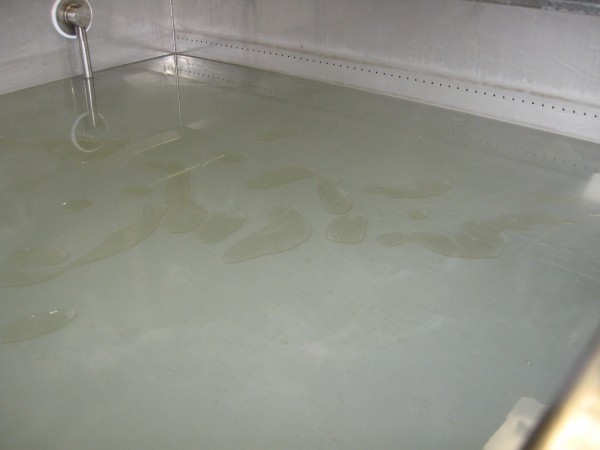When parts aren’t coming clean two of the first things most process engineers target as potential problems are the temperature and concentration of the chemistry. These are, in most cases, good bets but one should resist knee-jerk reactions.
Chemical Concentration –
One of the common knee-jerk reactions to a cleaning problem is to increase chemical concentration. We associate higher chemical concentration with better cleaning but in many cases increasing chemical concentration will not only not correct the problem but may make it worse. Surprisingly, most cleaning processes are quite tolerant of variations in chemical concentration. I say this with caution as there are, indeed, those processes where tight (plus or minus 1 percent) control of chemical concentration is critical for successful cleaning but these are few and far between. In most cases variations of 5 to 10% will have little or no effect on cleaning effectiveness. If concentration is the suspected problem, however, the logical first move is to measure the concentration of chemistry using titration, a refractometer or other means as recommended by the manufacturer of the chemistry. Most chemical suppliers will be able to provide detailed instructions on how these measurements should be conducted. Once the concentration is known, it is a simple matter to add chemistry or water to re-establish the required concentration. One should be aware, however, that just because the chemical concentration is within suggested limits doesn’t mean that there aren’t other problems related to the cleaning solution. For example, the cleaning solution may be overly saturated with contaminants removed from previously cleaned parts. If in doubt, the cleaning solution should be changed out with fresh and tested to see if cleaning is restored. If it is, this is an opportunity to establish a bench mark for replacing the cleaning bath on a regular schedule. If it is not, follow some of the established troubleshooting procedures to determine the cause of the problem.
Temperature –
When temperature is suspected as the cause of a cleaning problem, the knee-jerk reaction is to increase temperature. Increased temperature is associated with better cleaning and, in fact, increased temperature does improve cleaning in many applications. Many chemistries, in fact have a minimum temperature at which the chemistry will not totally dissolve in water at a given concentration. This temperature is called the “cloud point” as the solution looks cloudy or milky below the cloud point. For best results, a chemistry should be run at a temperature above its cloud point.
There are, however risks in increasing temperature. Increased temperature may lead to part damage or potential dry down and/or flash rusting as parts are moved from one process stage to the next. When increasing temperature of a cleaning bath there is another possible peril that is little-known or understood but is easily recognizable. This is “oil out” of the chemistry.

“Oiling out” occurs when a chemistry is above the temperature at which surfactants can remain emulsified in the solution. Not all chemistries are subject to oiling out, but those that are are pretty much worthless once the critical temperature is exceeded. Those not familiar with oiling out may skim the disassociated surfactants (oil) from the surface in attempt to correct the problem. In fact, this is exactly the wrong thing to do. The proper move is to decrease temperature and mix the chemistry in an attempt to get the surfactants to go back into solution. In my experience, this is not always possible once oiling out has occurred. The best move is to replace the chemistry and monitor temperature carefully so that the oiling-out temperature is not exceeded. Again, this temperature should be available from the manufacturer of the chemistry.
– FJF –



 English
English Spanish
Spanish Chinese
Chinese Canada
Canada Mexico
Mexico United Kingdom
United Kingdom



